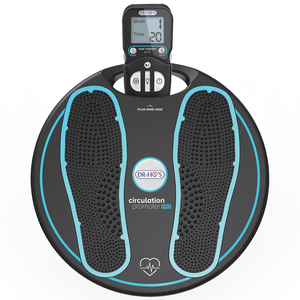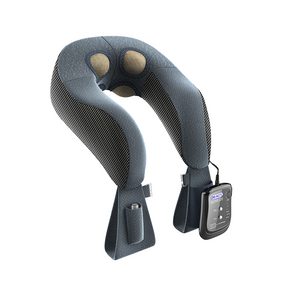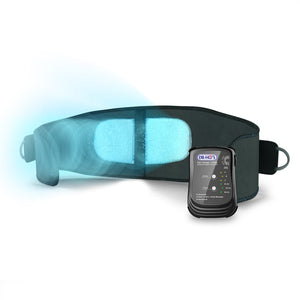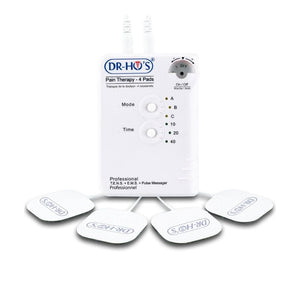Disclaimer: Information in this article is not meant to be used to treat or diagnose any disease or sickness, nor is it meant to promote any product or service. The information found in this article is providing general information regarding circulation. If you feel you have one or more of these symptoms, always consult with your doctor.
The DR-HO'S Circulation Promoter is not intended to be used to cure Diabetes. DR-HO'S Circulation Promoter stimulates nerves and muscles to temporarily relieve achy sore muscles to symptomatic relief and management of chronic, intractable pain and pain associated with arthritis. The Circulation Promoter will also stimulate healthy muscles to improve muscle performance and temporarily increase local blood circulation.
The Connection Between Diabetes and Poor Circulation
According to the International Diabetes Federation, hundreds of millions people suffer from diabetes worldwide. Because it’s so common, it’s important for diabetics to understand the risks that come with the condition. One of the most common side effects is poor circulation.
Those that suffer from diabetes know that it causes high levels of sugar (glucose) to build up in the blood. Because it causes issues in the blood, diabetes is a major cause of poor circulation. Many people with diabetes suffer from pain, numbness and discomfort as a result of their blood not circulating properly. These issues are mostly located in the feet and lower legs, as these areas are more prone to poor blood flow.
In What Ways Does Diabetes Affect Circulation?
Diabetes affects circulation by preventing blood vessels from circulating blood properly. Over time, diabetes leads to higher glucose levels in small, medium and large blood vessels. As blood sugar levels increase, a plaque can form on the blood vessel walls. When this happens, the vessel passages narrow and prevent proper blood flow. This reduced blood flow in the body can lead to a number of complications and it's one of the main reasons why diabetes is commonly linked to heart disease.
Peripheral Vascular Disease (PVD)
PVD is a disorder that is very common in people with diabetes. It’s the name given to the process of plaque build-up in blood vessels. It most commonly affects the feet and lower legs and can cause pain, discomfort, fatigue and a loss of sensation. The lack of proper blood flow to the extremities can prevent the body from being able to heal wounds, prevent pain and reduce inflammation. If unaddressed, PVD can also lead to other very serious health problems.
4 Ways Those With Diabetes Can Work to Increase Circulation
1. Exercise Regularly and Stay Active
Exercise should be an essential part of a daily routine for anybody suffering from diabetes and poor circulation. This is because exercise naturally increases local circulation while working to lower cholesterol and improve heart function. Better circulation also means that your body tissues have better access to oxygen and other nutrients which help with pain relief. Focus on aerobic exercises such as walking, running, biking or swimming, along with these at-home workouts and stretches:
As is the case with any exercise routine, it’s important to discuss your workout plan with your doctor to ensure it’s safe for your unique situation.
2. Maintain a Healthy Diet
There are no downsides to a healthy diet. Steering clear of excessive amounts of salt and saturated fats can help you manage your body weight, blood pressure and cholesterol. A better diet can keep your arteries clear and lower your blood sugar. Be sure to discuss any diet with your doctor to make sure you are getting the nutrients you need.
3. Quit Smoking
The harmful chemicals in cigarettes have very negative effects on the circulatory system. Continuous smoking can cause plaque to build up in the blood vessels which slows circulation and raises blood pressure.
4. Drink More Water
Drinking lots of water can keep your body hydrated, which helps keep systems such as blood circulation functioning properly. Staying hydrated is even more crucial for people with diabetes because water can dilute the high blood sugar levels in the bloodstream.

5. Use a Circulation-Promoting Machine
A circulation promoting machine may help to increase local circulation by stimulating the muscles in the lower limb to contract and release.
There are ways to help with poor circulation.
There’s no question that diabetes is a demanding, life-altering chronic condition to contend with. Poor circulation is just one of the many issues that can arise. But the good news is that these steps can help those with diabetes increase local circulation, relieve pain and maintain a healthy lifestyle. Be sure to discuss these steps with your healthcare provider to determine the best course of treatment for your specific condition.









![How Does Diabetes Affect Circulation? [Updated for 2021]](http://drhonow.com/cdn/shop/articles/diabetesfootpain_fb553673-9005-459b-a8c4-2eae5e7e78dc.jpg?v=1684507965)